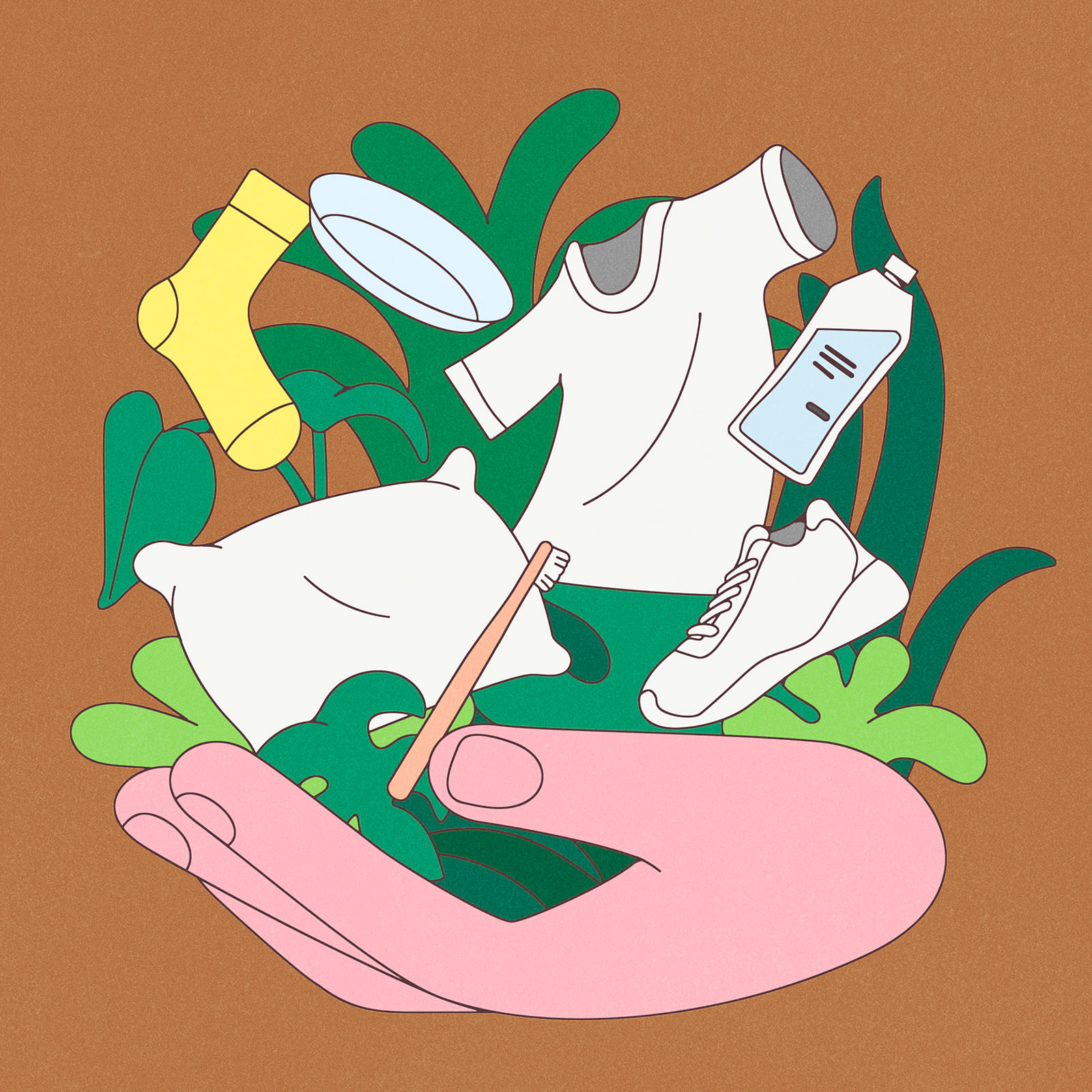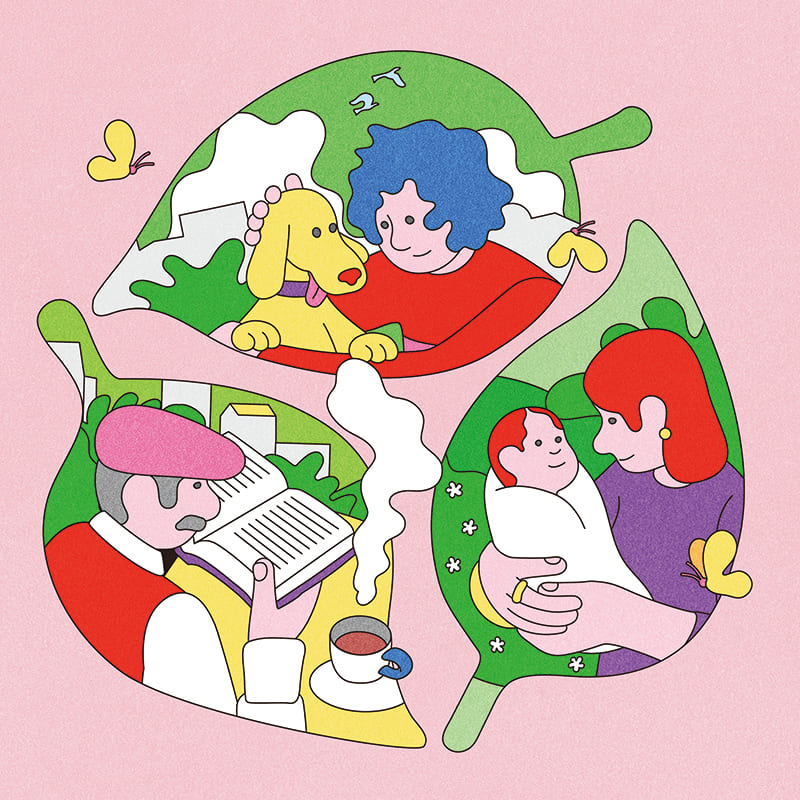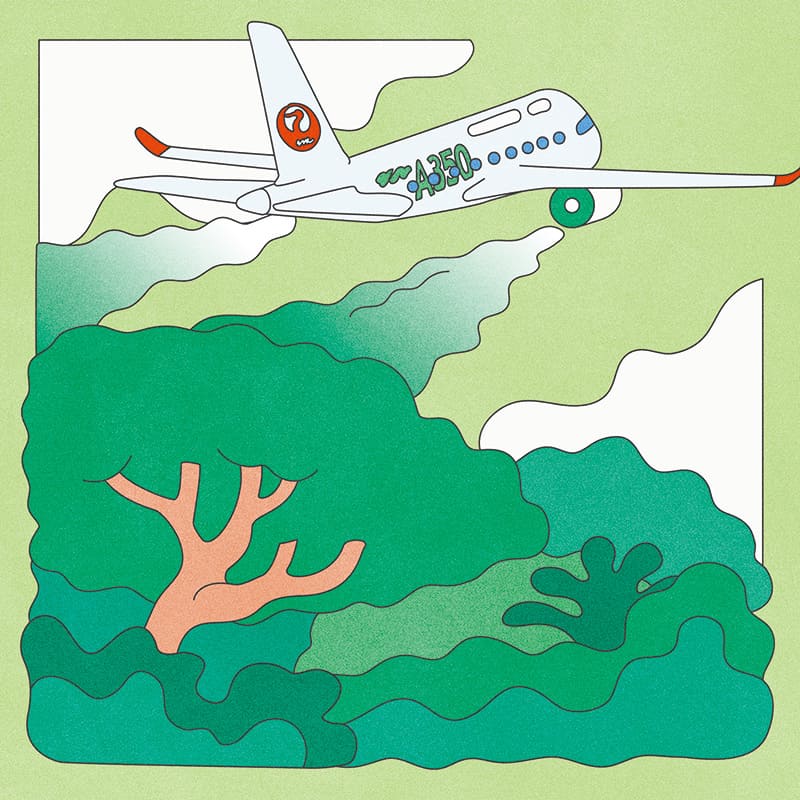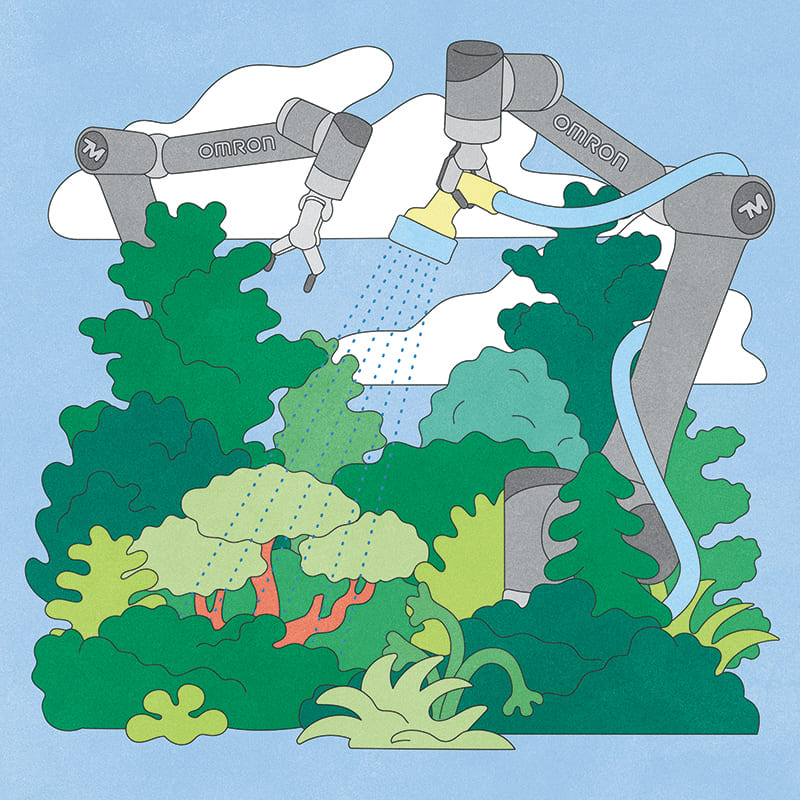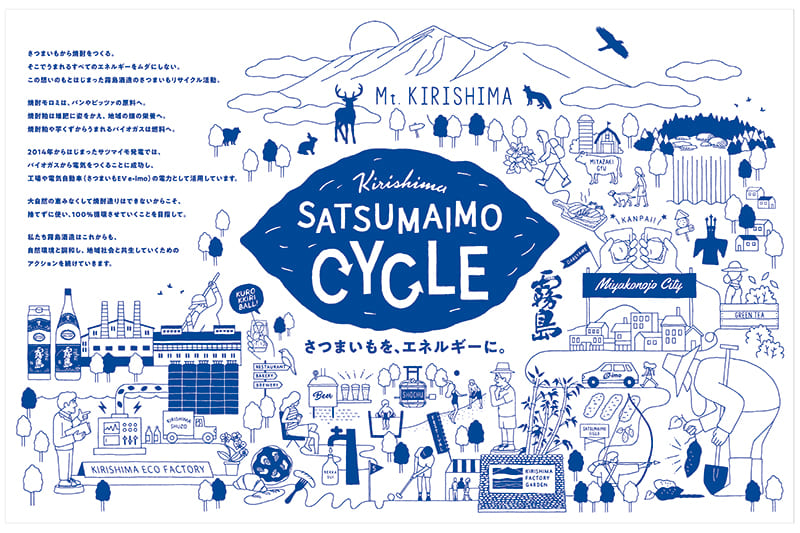August 30, 2024
Kose takes pride in creating beauty in the world
VOL. 12: Kose Corp.
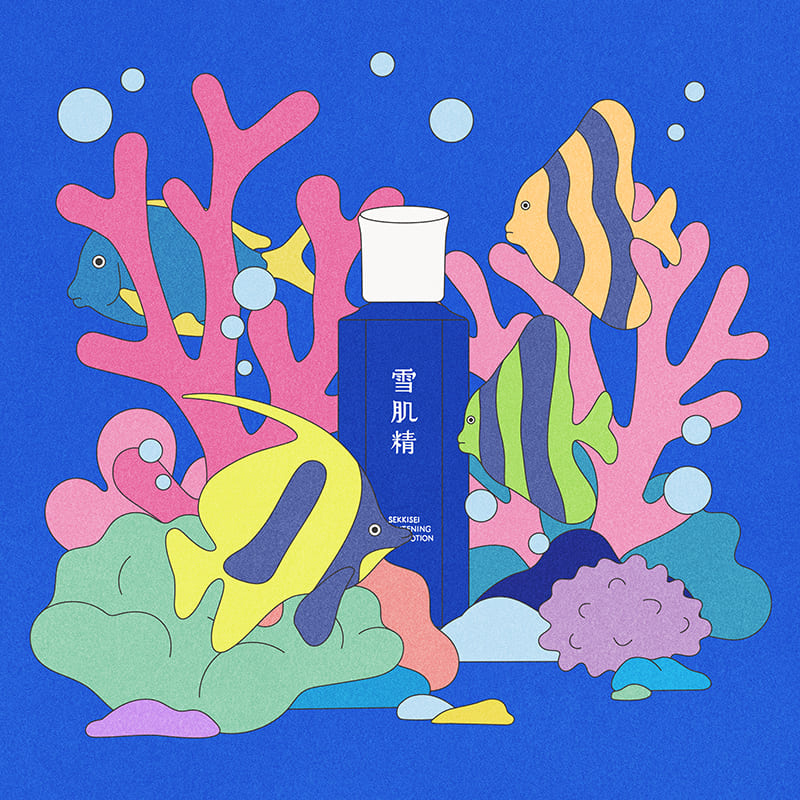
Kose’s strong points
1.Has promoted “Creating Beauty in a Sustainable World” since 1991
2.Made it onto CDP’s 2023 A list in both climate change and water security for the second consecutive year
3.Has transplanted coral across more than 12,000 square meters under its “Save the Blue” project since 2009
4.Works to reduce plastics in its products, including bottles and outer packaging
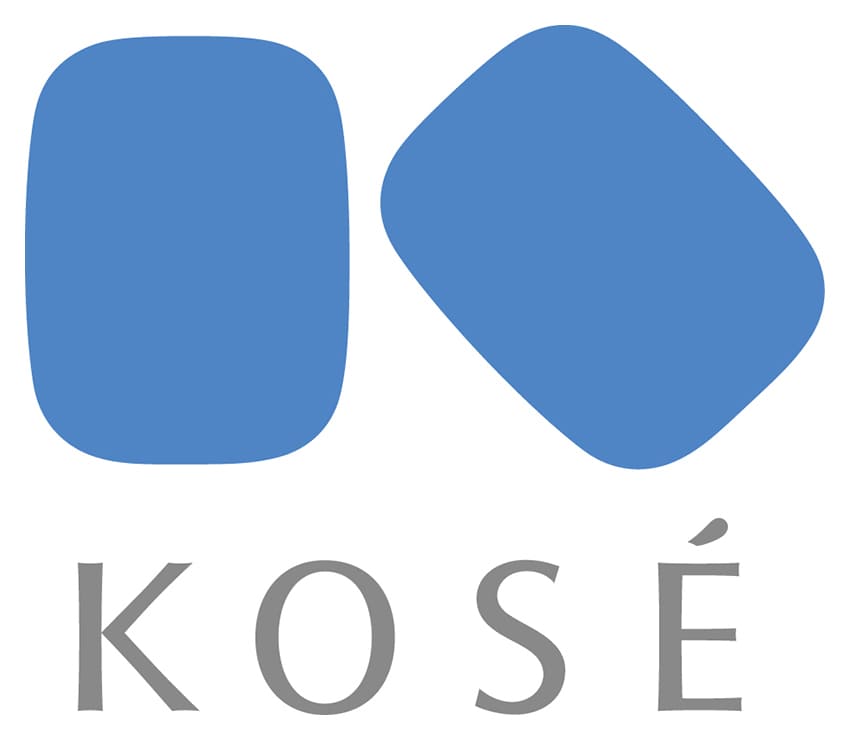
In July 2024, the cosmetics maker Kose Corp. launched a campaign to help coral reefs around Okinawa, part of the Japanese company’s “Save the Blue” project channeling some of the proceeds from its flagship Sekkisei cosmetics into restoring reefs.
This is the 16th year for the summer campaign, and consumers now recognize Sekkisei as environmentally aware — the rare cosmetics brand whose purchase leads directly to promoting environmental sustainability.
Established in 1946, Kose also makes home products like shampoo and sunscreen and has gone global, operating in 68 countries and regions, with its international business representing about 37% of its sales.
Kose commands a high reputation as a company actively working on sustainability projects. In July it was included in the FTSE4Good Index Series, a major stock index for investors who look for environmental, social and governance (ESG) factors, for the fifth straight year. Its score places Kose among the highest-ranking cosmetics makers in Japan.
Furthermore, Kose was put on the 2023 A list for both climate change and water security announced this February by the international nonprofit group CDP. Kose and Kao Corp. are the only Japanese cosmetics companies to have been included on the A list in two divisions for two consecutive years.
Sustainability, gender equality
Kose’s internationally praised sustainability efforts took a major leap forward in 1991, when it decided to increase its international presence by establishing a corporate identity. Regarding conservation of the environment as an important issue, it introduced the slogan “Creating Beauty in a Sustainable World” (see the article in the box).
In 1997, it set up a Global Environment Committee, cutting across groups, and initiated efforts for social contribution through its business. In 2017, it joined the United Nations Global Compact, aiming to contribute to achieving the international body’s sustainable development goals.
For this, it set up a body dedicated to designing sustainability strategies in 2019. In April 2020, it announced a sustainability plan that set targets for 2030. These moves drove Kose significantly forward in terms of contributions to people and society, as well as to the global environment. In terms of the former, “a source of adaptable products and services” is arguably a characteristic of Kose.
Kose does not have products specifically for men or women in its flagship brands, such as Sekkisei and Decorte. Yoshinori Haratani, director and general manager of Kose’s Corporate Strategy Department, said: “We take pride in the way we approach gender, which we believe is most characteristic of our company. [Our products] help people maintain their skin in healthy conditions regardless of their gender. We don’t need to make separate products for different genders, which helps us become more eco-friendly. The same goes for our business-use products — for example, complimentary toiletries at hotels, which our customers like because they are easy to manage.”
This philosophy that skin care and makeup do not discriminate between genders is embodied by Los Angeles Dodgers slugger Shohei Ohtani.
Kose has enlisted Ohtani to serve as a model for Sekkisei and Decorte ads since 2023. During the World Baseball Classic held from February to March, Ohtani posted on his Instagram account a photo of his locker in which containers of Decorte toner and cream were visible. This attracted attention in social media and helped boost the brand’s sales among both male and female buyers.
As part of efforts to help conserve the global environment, Kose has been working to reduce emissions of carbon dioxide in order to achieve carbon neutrality in Scope 1 and 2 (direct and indirect) emissions by 2040, reduce its use of plastics, including through reconsidering packaging materials and using recycled plastics, and promote responsible purchasing of palm oil.
One especially unique characteristic of Kose is its goal of achieving an “increase in awareness of environmental issues through products and services,” as mentioned above.
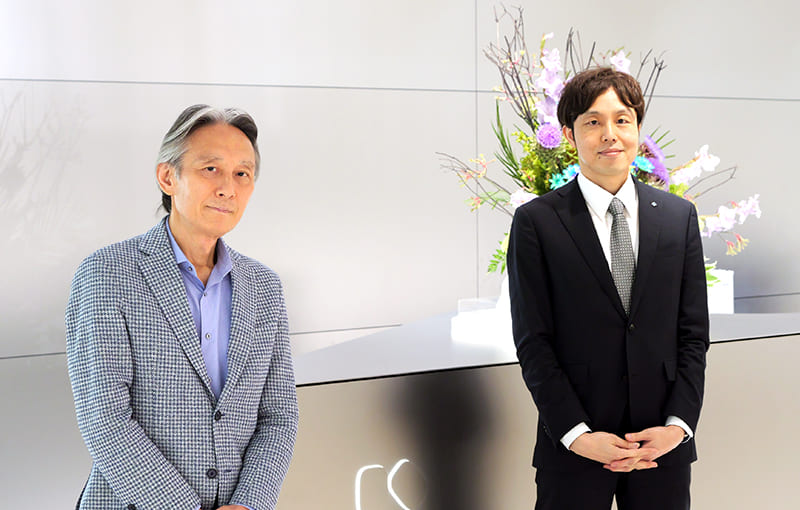
PHOTO: OSAMU INOUE
Planting coral
Sekkisei, sold in 15 countries and regions, mainly in Asia, is a brand that represents Kose. Starting in 1985 with a toner made from Japanese and Chinese herbal extracts, Sekkisei has added new items and grown into a skin-care brand that is a major seller for the company. At least 67 million Sekkisei toners had been shipped by November 2023.
Sales growth accelerated in 2007 after Kose ran an ad campaign featuring a popular actress with the support of Kazutoshi Kobayashi, who became its president that year. Riding on the brand’s success, Kose launched the “Save the Blue” project in 2009.
Under the project, Kose makes a donation to fund coral conservation activities for areas equivalent to the total area of the bottoms of the containers of all eligible Sekkisei products purchased during two summer months.
“Sekkisei is our signature brand, and we were considering ways to make use of its wide reach and popularity to launch a long-term project. The project has now developed into an annual event involving not only our customers but also our distribution partners,” Kose Director Yoshinori Haratani said.
In 2011, the project’s target scope was expanded to include coral overseas. Now it supports coral conservation in a total of nine countries and regions, including Japan. Over the past 15 years, the project has planted more than 20,000 corals in areas totaling 12,269 square meters. It has played a significant role in stimulating consumer interest in environmental conservation and deepening their understanding of it, as the campaign is advertised widely using pop-up ads and displays.
The project expanded its scope of activity in the winter of 2022, when Kose began an activity to protect snow, not limiting its projects to one season. But these are not the only contributions to global environmental conservation that Sekkisei has made.
Reducing plastics
In September 2020, Kose introduced the first full Sekkisei rebranding: Sekkisei Clear Wellness, a new series featuring unique ingredients extracted from plants grown in Japan. For this series, Kose reviewed all factors related to packaging and containers to reduce the use of plastics.
The bottles for the series use a “green nano” resin additive, reducing CO2 emissions when the plastic is incinerated as waste, and biomass PET, reducing the amount of petroleum-derived materials. In addition, a no-label design reduces the amount of plastic and ink used, and the plant-derived ink is biodegradable.
A cardboard material was chosen for the outer packaging, and instead of printed instructions, a QR code lets users access detailed instructions online. Kose also introduced refills for the series, part of its participation in a project initiated by the Ministry of the Environment in 2022 for a model project for investigating CFP calculation, reduction planning and presentation. In this series, the company made clear reductions in CO2 emissions across products’ life cycles, from production to disposal.
Emissions calculations for the product Sekkisei Clear Wellness Pure Conc SS, for example, have shown that refills had 28% lower CO2 emissions than bottled products across their life cycles, from the procurement of raw materials through to disposal and recycling.
In addition, Kose launched in early 2021 the Sekkisei Clear Wellness products W Barrier Mist and UV Defense, the first to come in standing pouches made entirely of paper instead of plastic. Such pouches were believed to be practically impossible to develop, but Kose managed it with the help of Toppan Inc., a major printing company.
Furthermore, Medicated Sekkisei Brightening Essence Lotion, launched this March, uses biomass plastics and reduces overall plastic through things like doing away with wrapping film and using paper rather than plastic for the seal on the box. These measures allowed Kose to reduce CO2 emissions by about 9% for the product’s regular size and 10% for the large one.
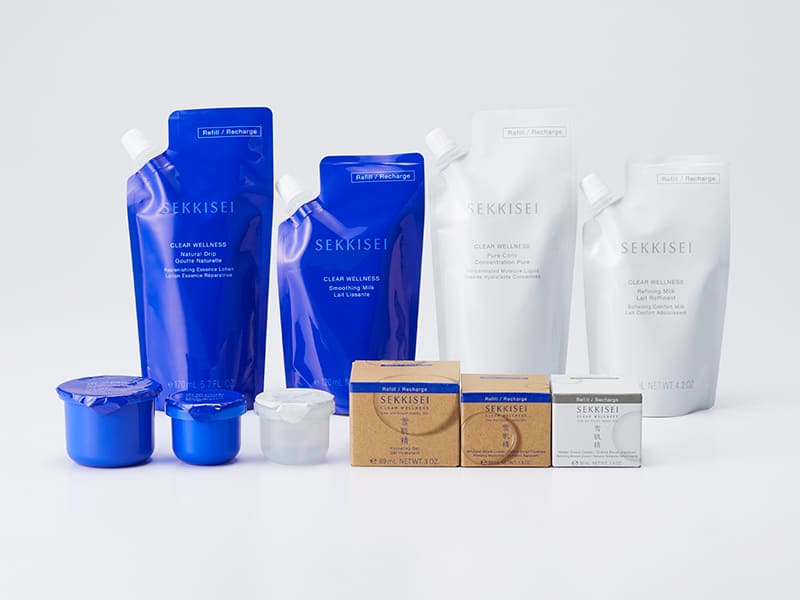
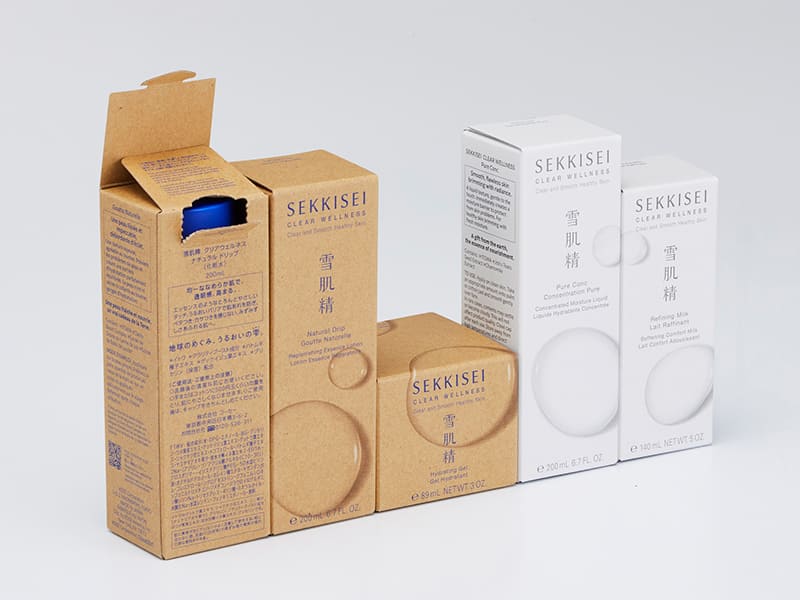
The bottles for the Sekkisei Clear Wellness series use a “green nano” resin additive and biomass PET, and the outer packaging uses a cardboard material. The ink used is plant-derived and biodegradable.
© KOSE
Remaining a pioneer
Thanks to these efforts, the sustainability plan introduced in 2020 has been progressing steadily. This April, Kose gave an update on progress so far and at the same time strengthened its efforts.
“The most significant update is the addition of the target of achieving net-zero CO2 emissions, including Scope 3 emissions (in the supply chain), by 2050, clarifying the target we’ll aim for after the existing target of 30% reduction by 2030,” said Seiji Kawano, general manager of Kose’s office on sustainability strategy. “Going forward, we plan to work on horizontal recycling, where we’ll collect bottles of cosmetics, including Sekkisei. We are also preparing to decide by April 2025 on target figures for the introduction of refills for more products.”
“So far, we have done what we’ve had to do naturally as a member of society,” Kawano continued. “So going forward, we aim to contribute to people and the Earth, especially where beauty is involved, while remaining what we are.”
“Working with external partners to inspire each other is a tradition of ours,” Director Haratani said. “I think we should seek relationships that benefit both sides rather than cushy, too-friendly relationships so that, for example, we can work with even industry rivals on open innovation projects or develop new products.
“And I think it’s in our DNA to do so,” he added.
In the past, Kose had a partnership with L’Oreal, the world’s largest cosmetics maker. When Kose founder Kozaburo Kobayashi learned that L’Oreal was planning to crack the Japanese market, he visited the French company and signed a technological cooperation deal in 1963. A factory was built in the Saitama city of Sayama to manufacture L’Oreal products targeted at Japanese consumers, and the two companies also jointly launched a beauty salon business.
Although the two companies ended their partnership in 2001, the experience of that success stayed with Kose, leading to collaboration with Kao.
In 2021, Kose and Kao signed a comprehensive collaboration deal on sustainability for cosmetics. In the first project under the deal, the two companies have been working to realize horizontal recycling of plastic bottles for cosmetics and other products since April 2022. They are also working on a project to recycle cosmetics into paints.
It is still uncommon for rivals to work together on sustainability, but “a pioneering spirit and showing examples for others to follow is also part of what makes Kose Kose,” Haratani said.
“Kose was a pioneering company to introduce [powdered] foundation and serum products in the skin-care genre,” Haratani continued. “We’re doing the same thing in the sustainability field. We hope to offer products and services that have new added value and are good for the global environment.”
Kose will remain a pioneer with brands that show excellent awareness about the environment. The Earth must remain beautiful — helping to do so is the pride of this “beauty creation company.”
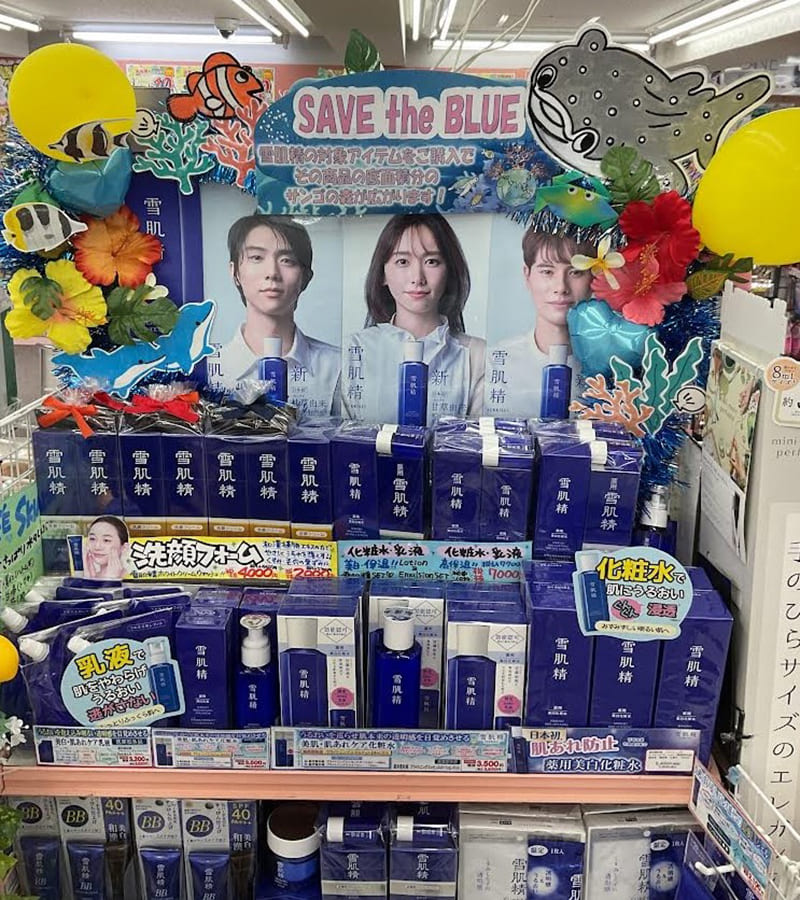
© KOSE
Thoughts on corporate slogan
Yoshinori Haratani
Director
General manager, Corporate Strategy Department
In 1991, the Kose group introduced the slogan “Creating Beauty in a Sustainable World” with a strong determination as a “beauty creation company” to share our wisdom and work to benefit other people and the Earth.
Thirty-three years have passed since then, but the slogan has not lost color. On the contrary, it has become increasingly suitable to the current age. It is now the cornerstone of our determination to unite groupwide efforts to address sustainability issues.
What made us come up with this slogan and make it our cornerstone? Why are we so serious about sustainability? There are two reasons for this.
One is that cosmetics makers are kept alive by nature’s blessings. In 1991, there were not yet terms like “SDGs,” or “sustainability” in the context in which it is now used, but in our company, we were already seriously discussing that we must ensure that limited resources never get used up.
Resource exhaustion would mean the end of plant-derived materials. As a chemical maker that uses nature’s blessings, Kose naturally has a strong sense of responsibility for conserving the global environment. In my understanding, this is reflected clearly in the corporate slogan.
The other reason is that paying attention to a sustainable global environment and society is an indispensable factor for us as a company to be chosen by customers. In other words, consumers will turn their back on companies that are not serious about taking action for the global environment.
To be chosen, it is important for us to continue to live up to our promise to the Earth and people from a long-term perspective, rather than doing so in a one-off manner. I think this is symbolized by the efforts under the Sekkisei “Save the Blue” project.
This is a project in which we fund activities to protect the sea and forests using some of our profits. This year marks the 16th year since its launch. This initiative to use the established brand Sekkisei to protect the blue Earth has come to be recognized widely among consumers.
We were determined to never give up on the project, and our strong determination is what has led us to success. The fact that Kose is a family-run company had a positive impact on our thinking for the project and our determination to carry it through.
“Don’t do things that future generations will be ashamed of” is a philosophy that remains among members of Kose’s founding family. I have a very vivid memory of our president saying to us, when launching the Sekkisei “Save the Blue” project, “I would never tolerate it if you gave up on this project.”
Sticking with the project is a way for us to demonstrate our sense of responsibility, and it means we are keeping the promise we made in 1991 of contributing to people and the Earth. We are determined to continue to keep that promise into the future.
人と地球への思いやり“美の創造企業”の矜持。
1946年創業の老舗の化粧品メーカーであるコーセーは、サステナビリティへの取り組みに意欲的な企業としても評価が高い。「CDP 2023年版」でコーセーは、「気候変動」「水セキュリティ」の2部門で最高評価を受ける「ダブルA」企業となった。とりわけコーセーらしいユニークな取り組みが、「商品・サービスを通じた環境課題の啓発」だろう。
「あなたが美しくなると、地球も美しくなる。」――。化粧品を購入すると、その分、沖縄の海にサンゴ礁が広がる。2024年7月、そんなキャンペーンが今年も始まった。コーセーを代表する化粧品ブランド「雪肌精」が展開する雪肌精「SAVE the BLUE」プロジェクトの一環。夏のSAVE the BLUE活動は今年で16年目を迎え、雪肌精は環境意識の高いブランドとしても消費者から認知されるようになった。
世界的にも、購入や使用がサステナビリティに直結する化粧品ブランドは珍しい存在と言える。雪肌精の地球環境への貢献はこれにとどまらない……。
Return to Sustainable Japan Magazine Vol. 39 article list page

